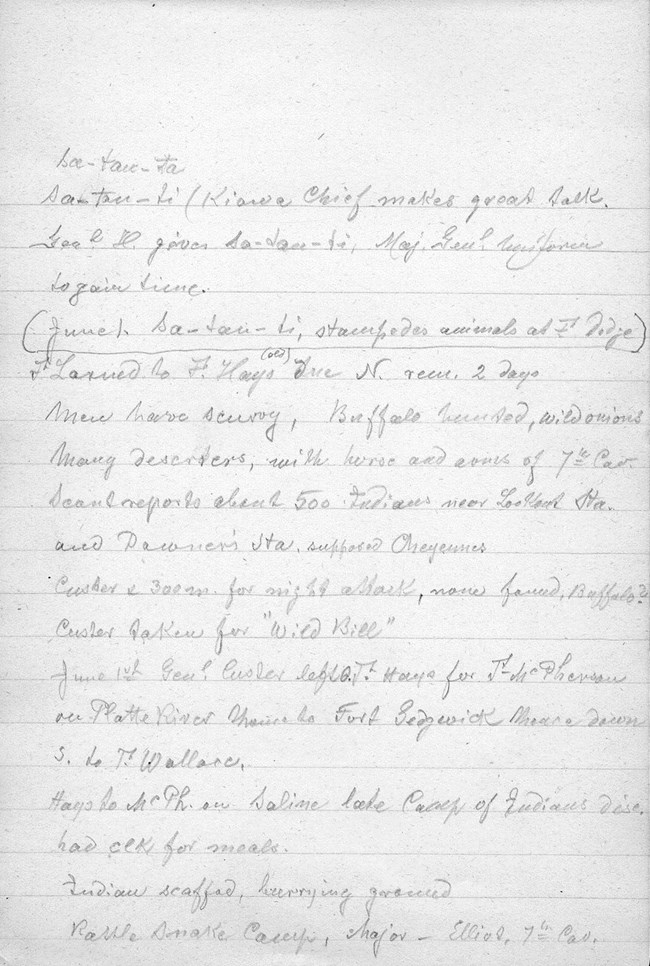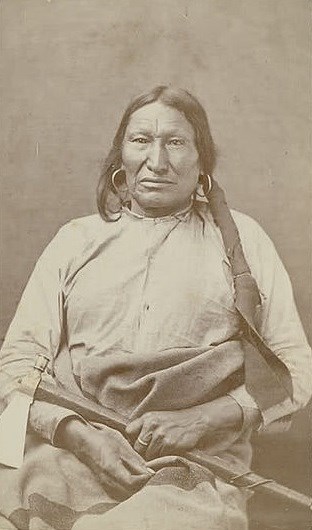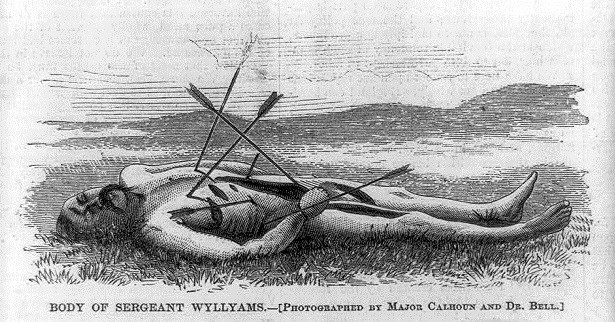
From Kansas Historical Society, Kansas Memory June 1st, 1867 Sa-tan-ta (Kiowa Chief makes great talk. Genl H given Sa-tan-ta , Maj. Genl [XXX] [XXXX] to gain [time]. (June 1 - Sa-tan-ta; stampedes animals at Ft. Dodge) Ft. Larned & Ft. Hays (old) due N. [XXX] 2 days. Men have scurvy, Buffalo [hunted] , wild onions, many Deserters , with horse and each of 7th Cav. Scouts reports about 500 Indians near [XXXX] Sta. and [Dawner’s] Sta. Supposed Cheyennes. Custer 300 m. for night attack, none found Buffalo? Custer taken for “Wild Bill”. June 1st Genl Custer left Ft. Hays for Ft. McPherson on Platte River then to Fort Sedgwick [XXXX] down S. to Ft. Wallace. Hays to McPherson Saline take Camp of Indians [disc] had Elk for meals. Indian scoffed, hurrying ground. Rattle Snake [XXX], Major - Elliott, 7th Cav. 
June 24th, 1867 Between the battle action, Custer and his officer’s met with Pawnee Killer and a few warriors for a truce. The meeting was inconclusive, as both sides were trying to gather what the intentions of the other were. The Dog Soldiers were suspicious Custer was gathering information to attack the villages of their families, and Custer was suspicious the Dog Soldiers were planning to attack him at any moment. In a classic miscommunication typical during the plains wars, both sides were distrustful of the other; leading to no end in the cycle of violence. 
From Harper’s Weekly, July 1867
|
Last updated: June 18, 2018
